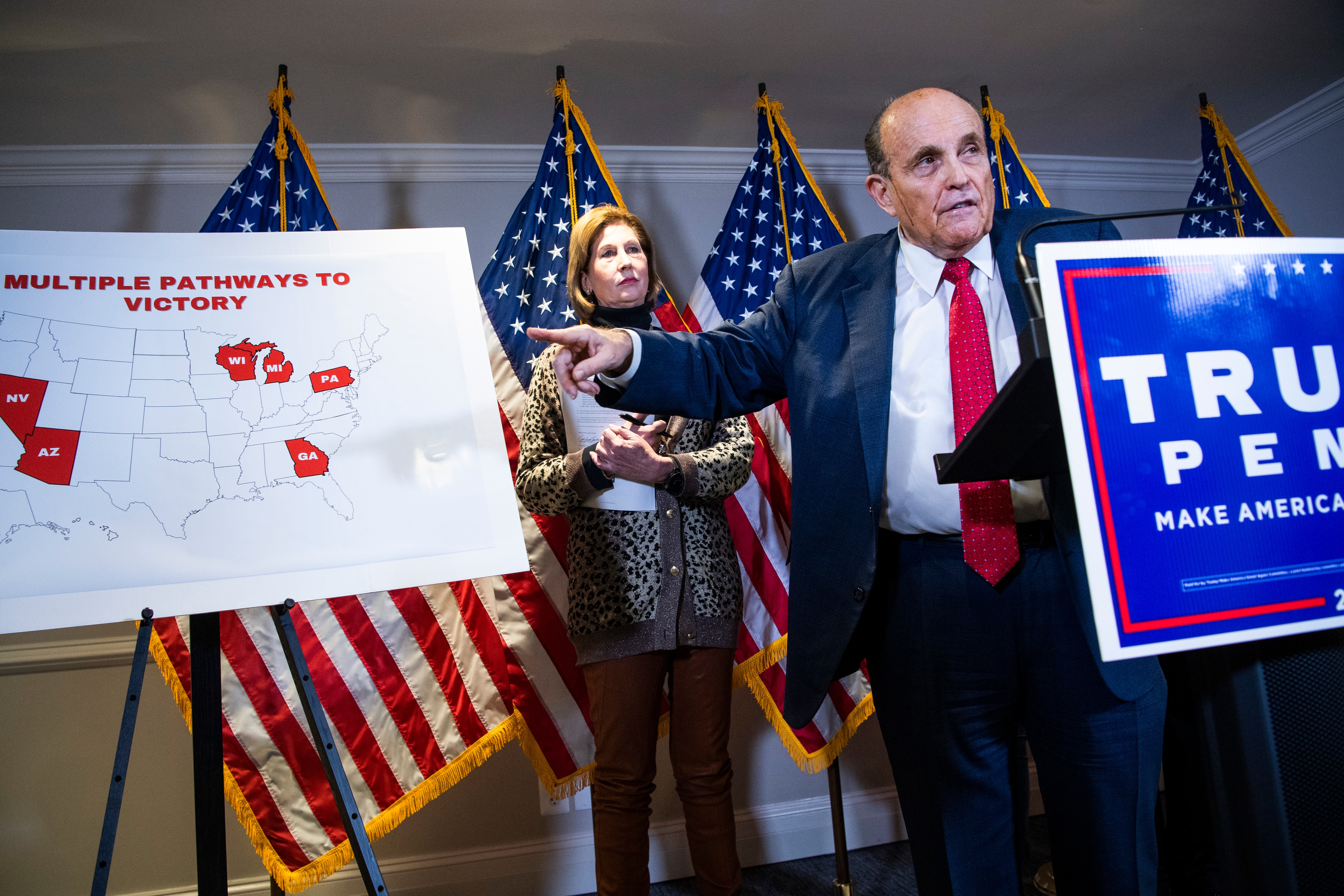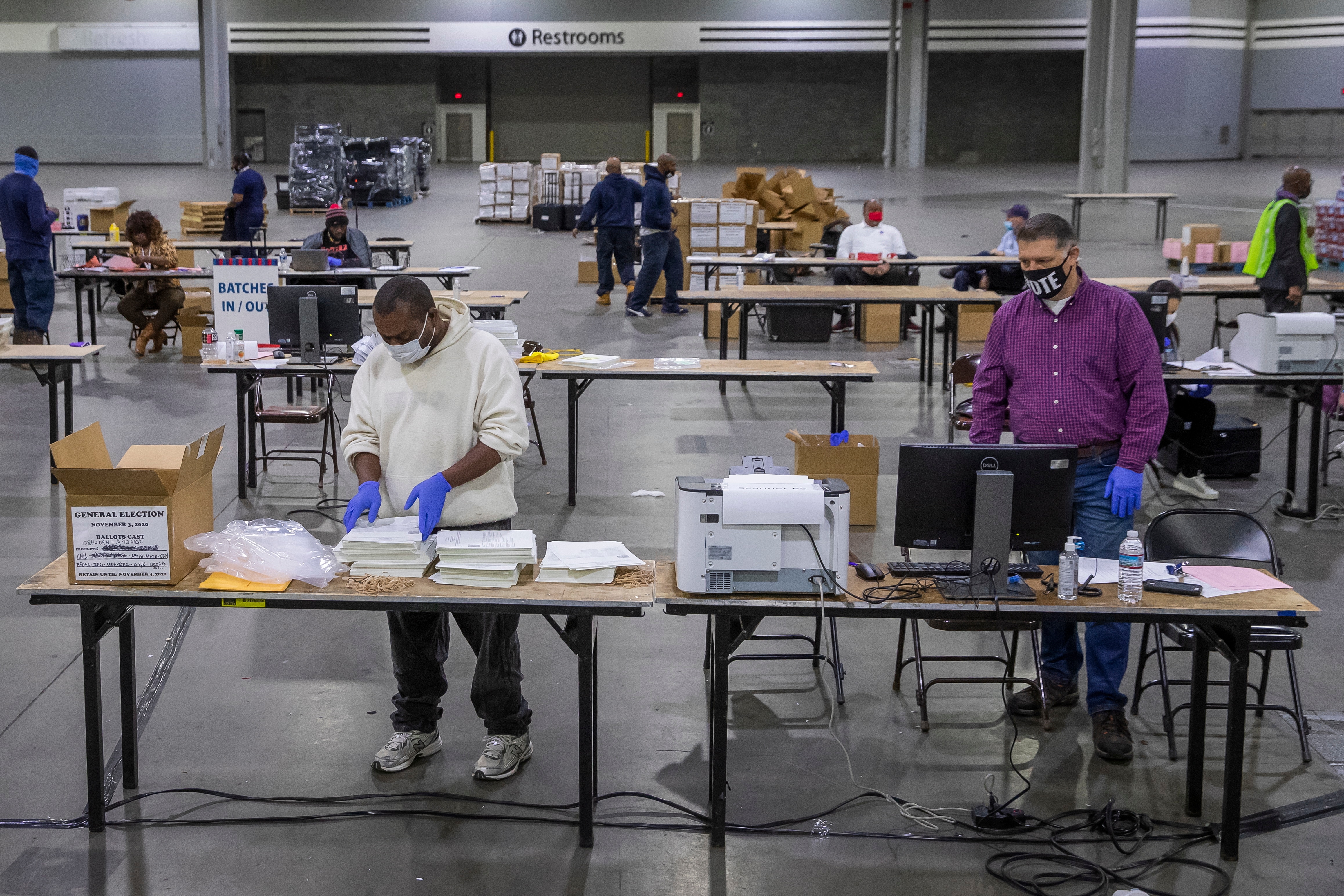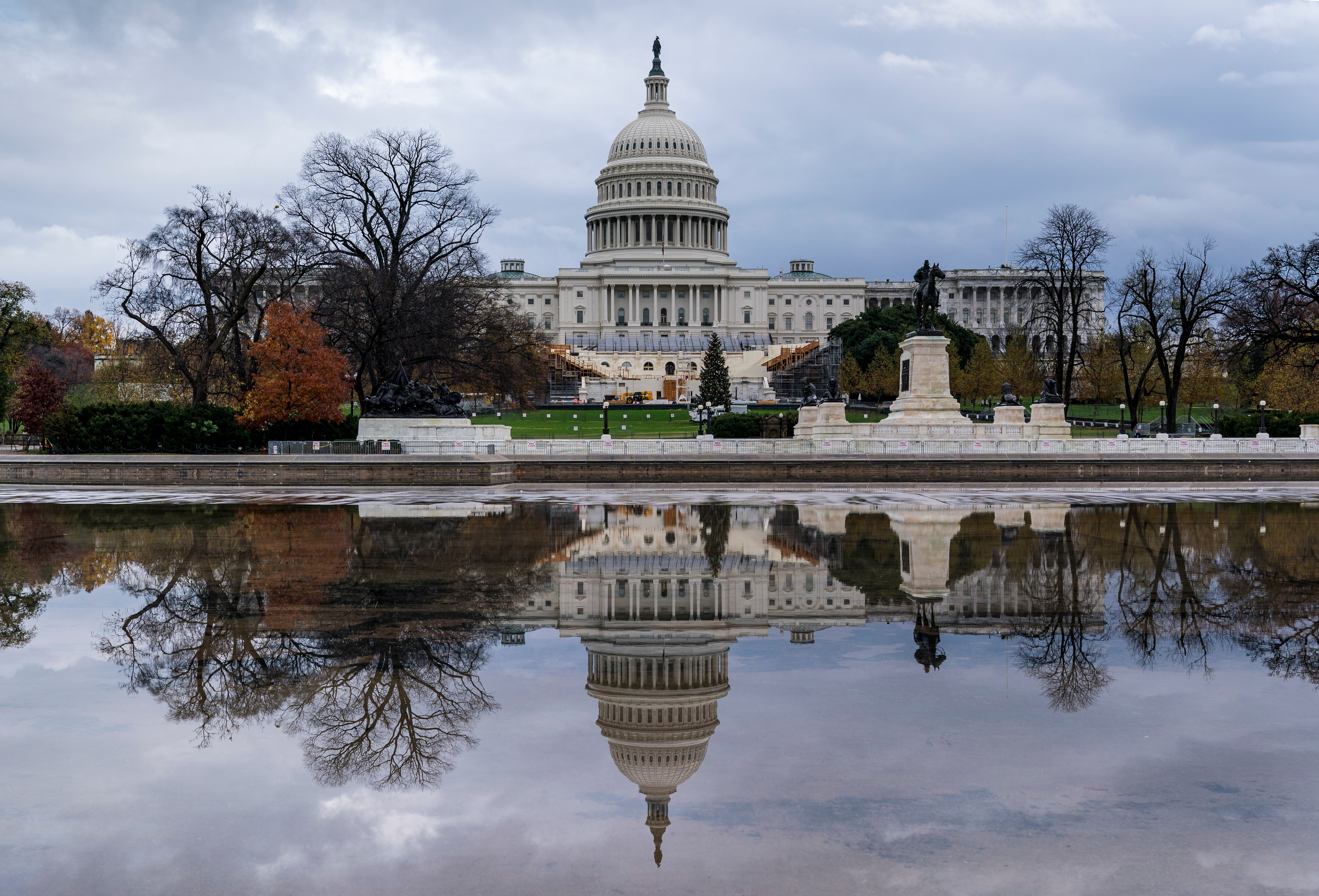Voting may have ended on 3 November in the United States, but finalising the presidential election is a months-long process.
While the results reported by media outlets are dependable, they’re not technically official. The official results come in over subsequent weeks, during a process called certification.
But already the Trump campaign is trying to derail these proceedings, initiating lawsuits in multiple states and repeatedly claiming the election, despite a lack of evidence.
“We won the election easily, there’s no way Joe Biden got 80 million votes. This election was a fraud. It was a rigged election,” President Donald Trump told Fox News on Sunday.
Although Mr Trump is still seeking to contest the vote count, he’s running out of time to do so – with the five key dates that formally conclude the election quickly approaching.
8 December – all legal proceedings must be settled
On 8 December, all court cases regarding the election must be settled and the majority of vote counts certified.
Aditi Juneja, a legal counsel at the US non-for-profit Protect Democracy, told SBS News this is known as the “safe harbour” date.
“It’s not a requirement [to complete vote counting], but it does create a strong incentive because whichever the slate of electors are that are submitted by 8 December are the ones that Congress is required to treat as conclusive,” Ms Juneja said.
Senior fellow from the United States Study Centre Bruce Wolpe told SBS News even considering the multiple court cases Donald Trump is threatening, he has ultimately run out of time.
“Given where we are, where the President has lost virtually every case he has brought in court, and given where the certification process is, it’s moving exactly to schedule,” Mr Wolpe said.
“The President will protest mightily against them and say there are court challenges but there is really nothing to disrupt the states confirming the actual result from election day.”
14 December – the Electoral College members cast their vote
On 14 December, the members of the Electoral College will meet in their respective state capitals to formally vote for the position of president and vice president.
When citizens cast their ballots for president in the popular vote, they’re also choosing a number of electors. Electors are expected to reflect the voting preferences of voters in their state.
Mr Wolpe said this was especially important considering it’s the Electoral College that determines the US president, not the popular vote.
“So, by the end of that day, the states will have cast their electoral votes and there will be a tally of that, and that will be the penultimate step to absolutely confirming the election result,” he said.
23 December – the Electoral College votes are delivered to officials
After the 538 Electoral votes are counted, the certificates are sent by mail to various officials, including the president of the Senate, in Washington DC.
They must be delivered by 23 December.
Ms Juneja said people often wonder why the process takes so long, and the answer to that question is steeped in history.
“The process is from the 1700s, 1800s, so the reason there’s this time lag in-between is because the slates of electors used to be submitted by horse and buggy,” she said.
“The reason there’s this time lag is because you’d literally have to travel from across the country.”
6 January – Congress oversees the count
The US House and Senate will meet in a joint session on 6 January, presided over by Vice President Mike Pence.
All members will witness the final count of these electoral votes and will confirm who becomes the next president and vice president of the United States.
Ms Juneja said members of Congress can object to the count, which would force the two chambers to consider the argument independently, but she says it would most likely be thrown out.
“It’s not unusual for there to be an objection,” she said. “There were objections in 2000, and you could imagine – given the polarised politics – we may in fact end up seeing objections,” she said.
“But an objection won’t change the outcome. It will maybe make for good television.”
Mr Wolpe agreed.
“It’s a formality, but it is the conclusion – the constitutional conclusion – of the election,” he said.
Mr Trump himself reluctantly told reporters he would leave the White House if the Electoral College votes for Joe Biden.
20 January – Inauguration Day
Everything finally becomes official on 20 January, or Inauguration Day, when the president-elect and vice president-elect are sworn into office and formally become the next leaders of the United States.
In years past, outgoing presidents have attended the ceremony, but Mr Wolpe predicts Mr Trump won’t be there.
“Donald Trump will not attend the inauguration,’ he said.
“If he believes that Joe Biden’s election is illegitimate, I can’t see how he attends the ceremony whereby Biden is legitimately sworn in as president of the United States.”









